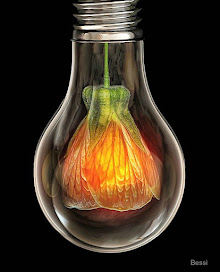 My father introduced me to fire when I was seven years old. He watched over me as I stood on a step stool and cracked two eggs in a pan. The familiar popping and crackling sounds that define the melody of fried eggs began, followed by a soft cacophony of squealing that resembled the chatter of hungry baby chicks. I asked my father if he could hear the chicks under the pan lid. He smiled, making several attempts to conceal his laughter. When the eggs were done I turned down the flame, opened the lid and slid two sunny-side-up eggs onto my plate.
My father introduced me to fire when I was seven years old. He watched over me as I stood on a step stool and cracked two eggs in a pan. The familiar popping and crackling sounds that define the melody of fried eggs began, followed by a soft cacophony of squealing that resembled the chatter of hungry baby chicks. I asked my father if he could hear the chicks under the pan lid. He smiled, making several attempts to conceal his laughter. When the eggs were done I turned down the flame, opened the lid and slid two sunny-side-up eggs onto my plate. My father was a better eater than a cook. When he chose to prepare a meal he had a hodgepodge style of assembling savory dishes that involved caramelizing onions before adding potatoes, meat and any appropriate leftovers he could find. Dad never indulged in pastry making but there was one unusual exception; cornmeal dough designed for catching carp. My father had a precise method for cooking the bait so it would form a firm, but malleable ball when it was finished. The recipe was simple; one cup of water, one cup of cornmeal, one tablespoon of sugar and a tablespoon of pure vanilla extract. Vanilla, according to my father, was the magic ingredient that lured carp. On one occasion my mother, who regularly used vanilla to bake cookies and cakes, chastised my father for using the “good vanilla” in his bait formula. While searching for an alternative a European butcher he knew recommended powdered vanillin, an assertive artificial vanilla used by bakers to add creamy vanilla flavor to pastry. Vanillin powder was a hit with carp which left my mother with a new dilemma; she had more fish to clean.
My father was a better eater than a cook. When he chose to prepare a meal he had a hodgepodge style of assembling savory dishes that involved caramelizing onions before adding potatoes, meat and any appropriate leftovers he could find. Dad never indulged in pastry making but there was one unusual exception; cornmeal dough designed for catching carp. My father had a precise method for cooking the bait so it would form a firm, but malleable ball when it was finished. The recipe was simple; one cup of water, one cup of cornmeal, one tablespoon of sugar and a tablespoon of pure vanilla extract. Vanilla, according to my father, was the magic ingredient that lured carp. On one occasion my mother, who regularly used vanilla to bake cookies and cakes, chastised my father for using the “good vanilla” in his bait formula. While searching for an alternative a European butcher he knew recommended powdered vanillin, an assertive artificial vanilla used by bakers to add creamy vanilla flavor to pastry. Vanillin powder was a hit with carp which left my mother with a new dilemma; she had more fish to clean. On May 30, 2009 I lost my 82-year-old father to pancreatic cancer. I am filled with comfort each time his spirit visits me through memory. How and when these moments occur is not predictable, but they are most intense when I am around food or nature; two of his great loves that were generously passed down to me. The story you are reading is the result of a blotter of vanillin I smelled while in perfumery class at Givaudan in September. One whiff and I instantly remembered the smell of my father’s carp bait cooking, the way he shaped the dough in his hands and how his hazel eyes gleamed when he said it was good enough to eat. I wanted to find a way to immortalize that memory with something I could eat. The resulting search led to crumiri, a Piedmontese cookie made with cornmeal. Crumiri can be flavored with a variety of extracts and spices; just like a master dough. Piping the cookies is the traditional manner in which crumiri are shaped, but I chose to roll the cookies individually by hand in order to enter into communion with the memory of my father shaping his cornmeal dough.
On May 30, 2009 I lost my 82-year-old father to pancreatic cancer. I am filled with comfort each time his spirit visits me through memory. How and when these moments occur is not predictable, but they are most intense when I am around food or nature; two of his great loves that were generously passed down to me. The story you are reading is the result of a blotter of vanillin I smelled while in perfumery class at Givaudan in September. One whiff and I instantly remembered the smell of my father’s carp bait cooking, the way he shaped the dough in his hands and how his hazel eyes gleamed when he said it was good enough to eat. I wanted to find a way to immortalize that memory with something I could eat. The resulting search led to crumiri, a Piedmontese cookie made with cornmeal. Crumiri can be flavored with a variety of extracts and spices; just like a master dough. Piping the cookies is the traditional manner in which crumiri are shaped, but I chose to roll the cookies individually by hand in order to enter into communion with the memory of my father shaping his cornmeal dough.Glass Petal Smoke’s recipe for crumiri has a digital lineage that begins with Father Giuseppe Orsini's Italian Baking Secrets, migrates onto the pages of Ivonne's Cream Puffs in Venice and finally lands on Clotilde Dusoulier’s Chocolate & Zucchini website. I have modified Ms. Dusoulier’s recipe to suit my tastes and memories. Since the cookie is Italian in origin and cornmeal is yellow, it seemed appropriate to add Italian bergamot (Citrus bergamia) for a bright twist.* Food grade essential oil of bergamot for this recipe was obtained from a flavorist. One and one half teaspoons of lemon extract will deliver superior results if you don’t have access to food grade bergamot.
Crumiri
Yield: 4 dozen
Ingredients:
· ½ cup (plus 5 tablespoons) unsalted butter, at room temperature
· ½ cup (plus 3 tablespoons) organic cane sugar
· 2 large eggs, at room temperature
· 1 teaspoon pure vanilla extract
· 10 drops of food grade Italian bergamot oil (or 1½ teaspoons of lemon extract)
· zest of one organic lemon
· 2 cups unbleached all-purpose flour
· 2/3 cup stone-ground yellow cornmeal
· ½ teaspoon non-iodized sea salt
· ¼ teaspoon nutmeg
Instructions:
· Divide oven racks into thirds and preheat the oven to 350°F.
· Line two baking sheets with unbleached parchment paper and set aside.
· Soften butter in the microwave for 50 seconds. It should be partially melted (not warm) when it is done.
· Cream together butter, bergamot oil (or lemon extract), lemon zest and sugar. In a separate bowl beat the two eggs and vanilla. Add the butter mixture to the egg mixture and incorporate.
· In a medium mixing bowl, combine the flour, salt, nutmeg and cornmeal. Add the wet ingredients to the dry ingredients and incorporate.
· Shape one teaspoonful of dough at a time by placing it between your hands and rolling it between the centers of your palms, pressing down very slightly. Place onto baking sheet in rows of four.
· Bake for 15 minutes, turning and reversing trays from top to bottom at 7.5 minutes and continuing to bake for another 7.5 minutes or until slightly golden around the edges.
· Transfer to a wire rack to cool.
· Store in an airtight container.
Notes:
*Italian Bergamot essential oils found in health food stores or online aren’t necessarily food grade. Find a reputable stockist that states that the essential oil of bergamot they sell is cold-expressed from the peel and food grade. Enfleurage in NYC is a good source. Dose conservatively as food grade essential oils are highly concentrated.
Cornmeal dough recipes are commonly shared among carp anglers, but claims regarding ingredients that give the bait its power vary with folkloric regularity. One angler cites several ingredients common to perfumery including; bergamot, cumin, fennel, lavender, lovage, sweet birch, orris root, peppermint, rue, tonka bean, wintergreen and valerian. Carp have a highly developed sense of taste and smell which contributes to their survival as bottom feeders.
This post is dedicated to the memory of my father, Paul Krell, born Perec Krell in Brzeziny Poland on May 1, 1927. Brzeziny was named for the town's numerous birch trees and was home to a blossoming textile industry that gave birth to many generational tailors. My father was one of those tailors. As a young man he survived Auschwitz as a child laborer, making uniforms for prisoners in the concentration camps. He was interviewed by Beth B. Cohen in "Case Closed: Holocaust Survivors in Postwar America," a book about the immigrant experience and post-DP life of Holocaust survivors.





